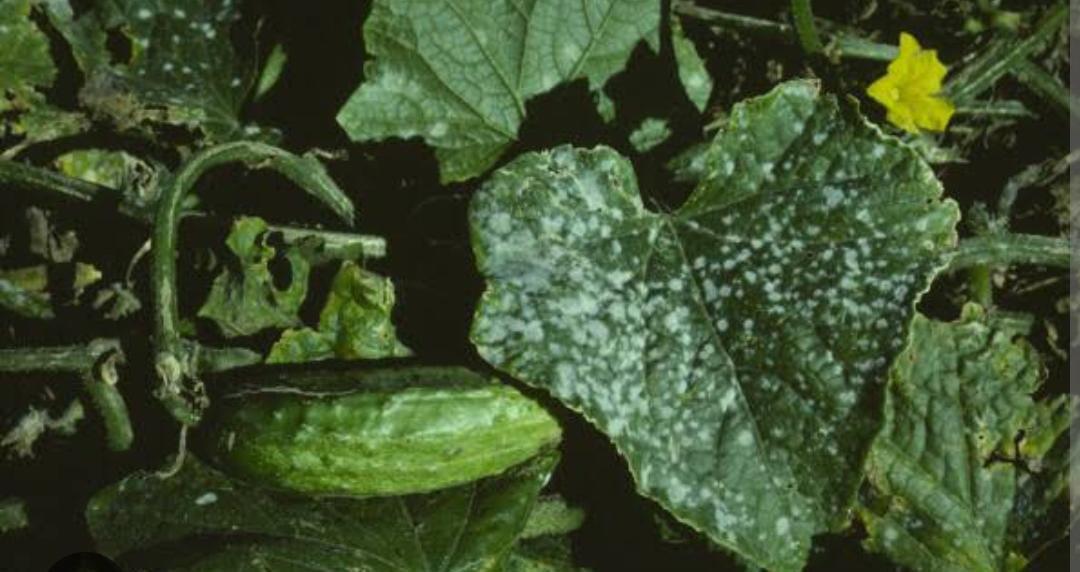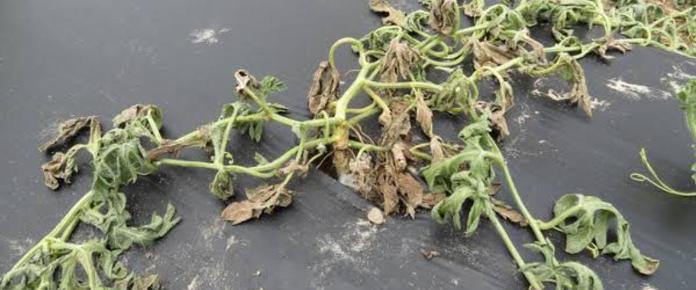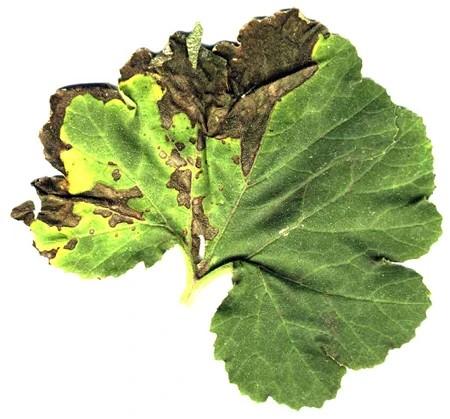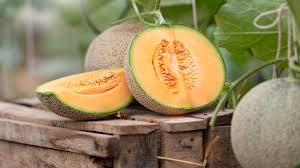Cantaloupe
Cantaloupe plants, low-growing and sprawling, prefer well-drained soil and full sun. Known for their sweet and edible melons, cantaloupes are popular in warmer climates.
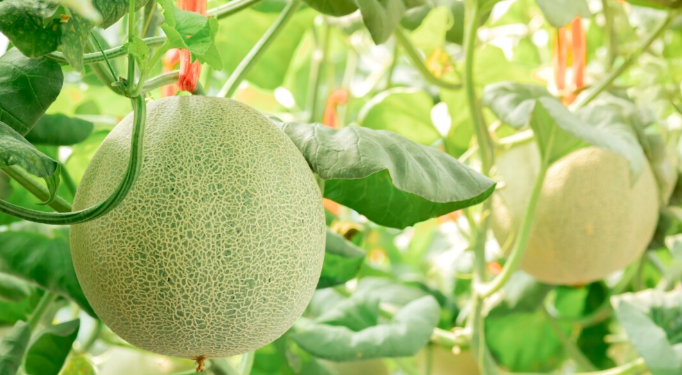
Habit
Vine
Height
40-60 cm
Growth
Fast
Soil
Well-drained, sandy loam
Shade
Full Sun
Moisture
Moderate
Edible
Yes
Medicinal
Yes
Origin
Africa, South Asia
Climatic Condition
Warm, Dry, Semi-Arid
Temperature (°)
22 to 32°C
Humidity (%)
40-60%
Potting media
Organic compost, mulch
Fertilizers
NPK 5:10:10, requires high potassium
Watering
Regular but not excessive, avoid waterlogging
Plant Weight
1-3 kg per fruit
Flowering Time
Summer
Soil Ph level
6.0 - 7.5
Water Ph level
6.0 - 7.5
Soil EC
1-2 dS/m
Yield Per Plant
4-8 fruits per vine
NPK ratio
05:10:10
life Span
Annual
Health Benefits
High in vitamins A & C, aids digestion, hydration
Suggested Grow Media or Potting Mix ?
50% compost, 30% perlite, 20% peat moss
Suggested Fertigation/Fertilizers
Fertilize every 2 weeks with a balanced, water-soluble fertilizer.
Common Diseases and Remedies
Bacterial Lead Spot, Rhizome rot
Large Black spots, Yellowing of leaves, Pruning,, Large Black spots, Yellowing of leaves, Pruning
Large Black spots, Yellowing of leaves, Pruning
HEALTH BENEFITS
High in vitamin C, boosting immunity and skin health.
· Contains beta-carotene, supporting eye health.
· Rich in hydrating properties, as it has a high water content.
· Helps regulate blood pressure due to its potassium content.
What Is An Cantaloupe Tree?
Cantaloupe is a type of melon that is commonly consumed as a fruit. It has a round shape, and the outer skin is coarse and reticulated. Melon flesh is usually orange, sweet and juicy, and is often eaten raw or used in salads, smoothies, and other dishes. Melons are a good source of vitamins A, C, potassium, and fiber.

What Are The Different Types Of Cantaloupe Plants?
1. Hales Best Jumbo Melon:
This classic cantaloupe variety is known for its size and delicious sweet flavor. It has a closely connected skin and bright orange juicy flesh, making it perfect for snacking or adding to fruit salads.
2. Oriental Sweet Cantaloupe:
This cantaloupe variety is prized for its rich, tropical flavor and enticing aroma. The bright orange flesh is incredibly juicy and sweet, making it popular in desserts and smoothies.
3. Sugar Cube Melon:
This small sugar melon is prized for its miniature size and concentrated sweetness. Despite their small size, sugar cube melons have a bold flavor and are perfect for single servings.
4. Ambrosia Melon:
As the name suggests, ambrosia melon has a wonderful taste and aroma. The velvety, aromatic flesh is exceptionally sweet and pairs well with flavorful ingredients such as prosciutto.
5. Athena melon:
Athena melon is popular for its firm texture and refreshing sweetness. It is often described as having a delicate floral aroma and a hint of musk.
How to care cantaloupe ?
1.Location
Choose soil with good sunlight and good drainage. Cantaloupe grow in full sunlight. Therefore, choose a location that receives at least 6 to 8 hours of direct sunlight every day.
2.Sunlight
Cantaloupe plants require plenty of sunlight to grow and produce sweet, fragrant fruit. Make sure to expose it to direct sunlight for at least 6-8 hours every day. Choose a sunny spot in your yard or yard where the plant will not be shaded by buildings, trees, or other tall structures. If you're growing melons indoors or in a greenhouse, make sure they get enough natural or artificial light to mimic outdoor growing conditions. Adequate sunlight is essential for healthy growth, flower formation, and fruit development in cantaloupe plants.
3.Soil
Prepare the soil by loosening the soil to a depth of at least 30 cm and mixing in organic matter such as compost or well-rotted manure. Melons prefer slightly acidic to neutral soils with a pH range of 6.0 to 6.8.
4.Hydration
Keep the soil evenly moist but not waterlogged. Water once or twice a week to a depth of about 1 to 2 inches per week, depending on weather conditions and soil moisture. Avoid overhead watering to prevent leaf diseases.
5.Nutrition
Vangalo plants benefit from regular fertilization to ensure they receive essential nutrients throughout the growing season. Use a balanced fertilizer with a high potassium content, such as: Example: 10-10-10.
6.Issues
It fights pests such as aphids, cucumber beetles, and spider mites, as well as common diseases such as mold and bacterial wilt.
What are the Benefits of the cantaloupe?
Rich in Nutrients: Cantaloupe is low in calories but rich in essential nutrients such as vitamin C, vitamin A (in the form of beta-carotene), potassium, and folic acid. These nutrients support overall health and well-being.
Hydration: Melons have a high water content (approximately 90%), making them useful for hydration, especially in hot weather or after exercise.
Antioxidants: Cantaloupe contains antioxidants such as beta-carotene and vitamin C, which neutralize free radicals in the body, reduce the risk of chronic disease, and support healthy aging. Masu.
Eye Health: The beta-carotene found in melons is converted to vitamin A in the body. Vitamin A is essential for maintaining healthy vision and reduces the risk of age-related macular degeneration and cataracts.
Digestive Health: Melons are an excellent source of fiber and promote digestive health by preventing constipation, supporting regular bowel movements, and feeding beneficial gut bacteria.
Heart Health: Potassium, an electrolyte found in melons, helps regulate blood pressure and heart function, reducing the risk of high blood pressure and cardiovascular disease.
Immune Support: The vitamin C found in melon supports a healthy immune system and helps protect against infections and disease.
Skin Health: The combination of vitamin C and beta-carotene in melon promotes healthy skin by supporting collagen production, protecting against sun damage, and reducing signs of aging.
FAQs About Growing Cantaloupe
1.How do I know when a cantaloupe is ripe?
Look for a sweet aroma at the stem end and a slight softening of the blossom end. The rind should have a golden hue and yield slightly to gentle pressure.
2.Can I eat cantaloupe seeds?
Yes, cantaloupe seeds are edible and nutritious. They can be roasted and eaten as a snack or added to salads, smoothi.
3.Can I grow cantaloupes in containers?
A: Yes, cantaloupes can be grown in large containers or pots with proper support for the vines. Choose a container at least 5 gallons in size and ensure it has adequate drainage holes. Provide support for the vines with a trellis or sturdy structure.
4.I grow cantaloupes vertically?
Yes, cantaloupes can be grown vertically by providing support for the vines using trellises, fences, or garden netting. Vertical gardening helps save space, promotes air circulation, and keeps fruits off the ground, reducing the risk of rot and pests.
5.What should I do if my cantaloupe vines are not producing fruit?
If cantaloupe vines are healthy but not producing fruit, it may be due to factors such as inadequate pollination, poor growing conditions, or nutrient deficiencies. Ensure plants are receiving sufficient sunlight, water, and nutrients, and consider hand-pollinating flowers if necessary.
